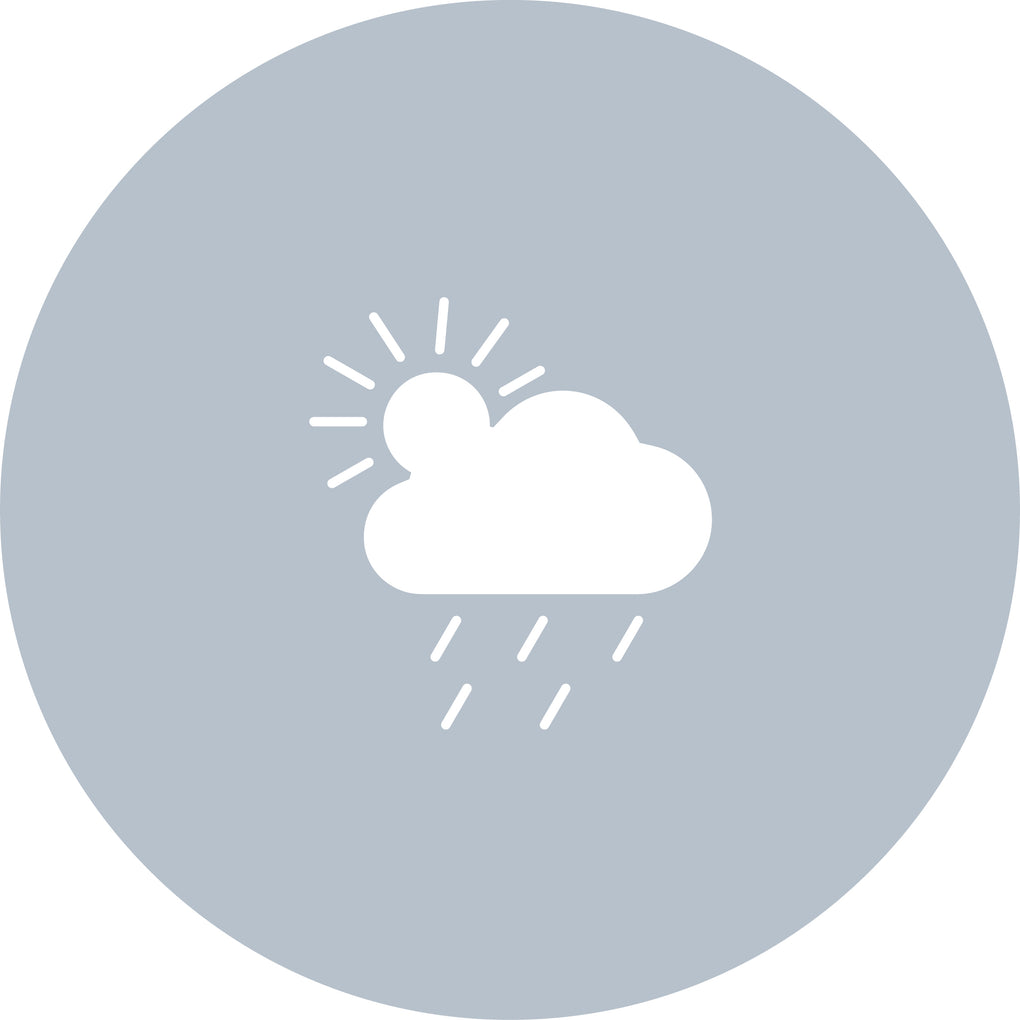Summer is nearly upon us and all of us are preying for a little bit of sunshine to make it a summer to remember. Every family love’s adventures in the sun and let’s be honest, we are all that little bit happier when the sun is shining. But the sun can be quite damaging to your child’s skin and possibly have harmful results in later life. This doesn’t mean you have to hide away indoors with your baby as soon as the sun has his hat on. You can still have fun in the sun whether you’re heading to the beach or just playing in the garden, it is just important to protect your little one’s sensitive skin from those harmful UV rays in the right ways.
To support sun awareness week, we have compiled our list of our top sun protection tips and some useful facts to help you and your family enjoy the sunshine safely this summer.

Sun protection
Children under 6 months old should be kept out of direct sunshine completely. Not many people know that infant skin contains very little melanin, a pigment that gives colour to skin, hair and eyes. But melanin also provides some sun protection to skin, which is why babies are especially prone to sun damage. Their skin is also too sensitive for the chemicals used in sun cream and could result in rashes and reactions, the best approach is to avoid using sun cream and keep infants under 6 months out of the sun completely. Keeping them dressed appropriately for sun protection and in a fully shaded area is perfectly fine though.
Once they reach 6 months of age, your baby can occasionally enjoy playing in the sun, but they should always wear sun cream, even if it looks a little overcast; it’s thought that up to 80% of the sun’s UV rays can pass through the clouds. The British Skin Foundation recommends that children should use a minimum SPF 30 product with UVA protection, but we believe the higher the SPF the better. Sunscreen should be applied 15-30 minutes before going out in the sun and re-applied every couple of hours throughout the day. Remember to re-apply if your child has been playing in the water.
As a general rule, UV rays are the strongest from 10am to 4pm so try to limit your little ones sun exposure during this time when possible.
Sun cream jargon explained
Let’s face it, sun cream labelling is confusing and hardly any of us really understand what it all means. This confusion could result in most of us not getting the protection our skin needs. Do you know your SPF from your UVB?
What is UVB and UVA?
The sunlight that reaches us is made up of three types in ultra violet radiation. The two you will see on a sun cream bottle are UVA and UVB, they each have differing degrees of impact on human skin but what is the difference?
For UVA, think of the A as standing for Ageing. These are the rays that penetrate the skin’s deepest layers, breaking down cell structure and leading to lines, pigmentation and melanoma. Where as, think of the B in UVB as standing for Burning. UVB rays affect the surface layers of skin, causing both sunburn and cancer.
SPF
SPF stands for “Sun Protection Factor” which is a measure of how long you’ll be protected for against the suns UV rays. For example, SPF 15 sun cream will allow you to be in the sun 15 times longer than it would normally take for you to burn without this protection.
It is important to know that no SPF rating will protect your baby’s skin 100% against UV rays but the higher the SPF the better the protection. SPF 15 will block approximately 93% of UVB rays, SPF 30 will block approximately 97% of rays and SPF 50 will block approximately 98% of UVB rays. With this in mind, parents need to take some other precautions to help protect their little ones skin as much as possible.

Be shady
With these SPF protection statistics in mind, we still recommend to keep your little one in the shade as much as possible to avoid any sun damage. Seeking shade between 10 AM and 4 PM, when the sun’s ultraviolet (UV) radiation is most intense, should be a top priority. Trees, parasols, gazebos, covered pavilions, and a long hood or sun umbrella on the baby carriage or stroller all provide varying degrees of shade.
Dress for the occasion
Clothes and sun protection accessories can provide a good degree of UV protection for your little one. You can keep the sun off your baby’s skin by dressing them in cool and lightweight clothes that cover their arms and legs. Cotton is perfect for summer since it’s made from a natural fibre that allows your baby’s skin to breathe easily as well as being super soft and gentle on delicate skin. Keep these clothes loose-fitting to make sure your little one isn’t overheating and stays cool.
Another essential sun protection items is a wide-brimmed sun hat. We recommend choosing a hat that shades scalp, cheeks, chin, ears and the back of the neck. We also recommend choosing a hat with an elasticated or velcro strap that tucks behind their chin to stop it from coming off.
Sunglasses are also important for protecting your little one in the sun. Children’s and babies’ eyes get 3 times the sun exposure of the average adult. As their eyes are still developing, they don’t process UV radiation as effectively as adults, so protection for their little eyes is super important. Choose sunglasses with 100% UVB/UVA protection to give their little eyes maximum protection, they’ll also look super cool and cute in their shades. It could also be a good idea to get a rubber strap for their sunglasses to prevent them from pulling them off.

Follow the leader
As in most things when you are a parent it is important to set an example for your children. Sticking to these rules as well, aside from protecting your own skin health, will also inspire your children to do the same. Make sure you set a good example for your children by also wearing sunscreen, sunglasses, and hats. When your children are older, explain the risks involved with spending long periods of time in the sun without protection. You are your child’s most important role model, and your child copies what you do. If you take sun safety precautions yourself, your child is more likely to do it too.
What should you do if you baby does get sun burn?
Whilst every parent takes steps to try to avoid sunburn, sometimes children do get sun burnt. It’s useful to know what to do in these situation to care for your little one. We all know that an obvious sign of sunburn is redness on the skin that feels especially warm to the touch. In extreme cases or if you little one is under the age of 1 always seek medical advice as this may need specialist care.
In most cases you can treat your little ones skin at home with some extra care tips.
- Place a cool, damp cloth on the sun burnt area for 10-15 mins, repeat throughout the day.
- Soothe skin with a gentle baby moisturiser or emollient cream. A good tip is to keep these in the fridge so they are extra cool to help soothe the skin.
- It is quite likely that your little one will be de-hydrated so make a big effort to replace fluids by drinking plenty.
- Is the sunburn is causing your baby pain, you can try to calm their pains with an over the counter approved infant paracetamol
- Keep baby out of the pool or sea for a couple of days as chlorine and salt can aggravate burns.
- During treatment your baby’s skin may begin to peel, but don’t panic. This usually happens after a few days and is a natural part of the healing process.

Most importantly we want you to have as much family fun outside as possible this summer. With these simple but vital tips and useful information you will be able to ensure your family is protected and can enjoy the sunshine safely.





















